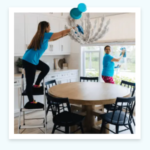Introduction : Elevator Buttons
Elevator buttons are the small but vital components that permit us to govern the movement and capability of elevators. Elevator buttons have developed substantially through the years, reflecting improvements in technology and a focus on enhancing the person’s experience.
The history of Elevator Buttons
The idea of the elevator dates back hundreds of years. However, it became no longer till the mid-nineteenth century that push-button technology revolutionized vertical transportation. Before that, elevators relied on a device of levers and operators to manually manage the elevator’s movements.
In the late Eighties and early 1890s, the first push-button elevator structures were delivered, allowing passengers to certainly press a button corresponding to their desired ground, eliminating the need for guide operation. But, these early push-button elevators now are not as popular as people considered operator-less elevators risky.
Things changed in 1945 when NYC’s 15,000 car operators went on strike, forcing workplace-goers to stroll up and down the construction. This occasion precipitated the elevator industry to start introducing buttons and encouraging human beings to apply elevators without operators. Via the Fifties, human beings had become cozy with the use of push-button lifts.
Present day innovations
Today, elevator buttons have emerged as much stronger, way to higher substances, IP67 & IP68 rankings, and various technological advancements. Some of the important things innovations in elevator buttons encompass:
Touchless Controls
Given the truth that some buttons can harbor greater micro organisms than bathrooms, touchless controls have come to be an increasing number of famous in elevator design. These touchless buttons use sensors to stumble on the person’s presence and sign up the floor selection without bodily touch.
Button sorts and functionality
Elevator buttons are available in numerous sorts and designs, catering to exceptional functionality and consumer needs. These encompass:
Floor buttons:
Used to select the preferred ground, commonly organized in a vertical panel inside the elevator cabin or outside on the landing.
Doors open and near buttons:
Allowing customers to manipulate the opening and ultimate of the elevator doors.
Alarm buttons:
permit passengers to signal an emergency via activating an audible alarm and sending a misery sign.
Emergency stop buttons:
permit instantaneous halting of elevator motion in important conditions.
Consumers revel in an Interface layout
The position, format, labeling, and remark mechanisms of elevator buttons are essential for enhancing the consumer’s enjoyment. Concerns include:
> Intuitive button arrangement and placement
> Clean labeling and legibility
> Responsive visual and auditory feedback while buttons are pressed
> Incorporation of tactile signs, along with braille, for customers with visible impairments
.Elevator Etiquette and Button usage
The right etiquette while using elevator buttons is essential for retaining a harmonious and green vertical transportation level in. A few key suggestions encompass:
> Avoid pressing all the buttons straight away or asking others to press buttons for you
> Preserve the door open for a quick period if a person is rushing to trap the elevator
> Admit to pressing the wrong button and express regret if the elevator stops at the incorrect ground
By knowing the records, improvements, and first-class practices surrounding elevator buttons, we will navigate these ubiquitous yet regularly neglected components of our everyday lives with more efficiency and attention to others.
Capabilities and Implications
Elevator buttons are the unassuming yet vital additives that allow us to govern the movement and capability of elevators. Those buttons have advanced dramatically through the years, reflecting improvements in generation and a focus on improving the person they enjoy.
Varieties of Elevator Buttons
These are available in diverse sorts, each designed to serve specific capabilities and cater to diverse consumer needs:
Fashionable Push Buttons:
These are the maximum commonplace type of elevator button, including a simple button that passengers press to pick out their desired floor.
Braille Buttons:
Designed to make elevators reachable for visually impaired people, those buttons include Braille characters in addition to conventional labeling.
Touchscreen Buttons:
Cutting-edge elevators might also have characteristic touchscreen buttons, which update bodily buttons with interactive contact-sensitive displays.
Key Card or RFID Buttons:
In comfy buildings or resorts, elevators may be prepared with key playing cards or RFID (Radio-Frequency identification) buttons, requiring authorized admission.
Vacation spot control structures (DCS):
A few superior elevators make use of the DCS era, where passengers enter their favored ground on a centralized control panel outdoors the elevator, and the gadget assigns them to a selected automobile.
Emergency Buttons:
Elevator cabins frequently have emergency buttons that passengers can press in case of emergencies, connecting to building protection or emergency services.
Close Door Buttons:
At the same time as no longer usually practical, closed door buttons give passengers the impact of control over the elevator doors.
Carrier Mode Buttons:
Elevator technicians use carrier mode buttons to access diagnostic and maintenance features, generally now not available to passengers.
Fireplace provider Buttons:
In case of a fire alarm, elevators can be ready with hearth carrier buttons to enable special emergency operations.
| Read More : Reddit |
Consumer experience and Interface design
The location, layout, labeling, and remark mechanisms of elevator buttons are important for enhancing the user’s enjoyment. Key concerns include:
Intuitive button arrangement and placement:
The association of buttons has to be logical and smooth to understand, often organized vertically or horizontally.
Clean Labeling and Legibility:
Each button should be genuinely classified with the corresponding floor quantity or designation, using legible typography and good enough assessment.
Responsive remarks:
Elevator buttons have to offer clean visual and auditory feedback whilst pressed, along with illumination or a beep, to affirm the selection.
Accessibility capabilities:
Incorporating tactile indicators, together with Braille, can make buttons more available for customers with visual impairments.
Implications and innovations
Buttons have significant implications for consumer experience, safety, and hygiene:
Touchless Controls:
Touchless buttons that use sensors to hit upon consumer presence are becoming extra normal, helping to minimize the spread of germs and decorate person protection.
Bacterial Colonization:
Research has shown that elevator buttons can harbor a large quantity of bacteria, posing a capability hazard for pathogen transmission, specially in clinic settings.
Spatial memory and usability:
Studies suggest that human beings often have bad spatial memory for the format of elevator buttons, highlighting the significance of intuitive layout.
With the features, innovations, and implications of elevator buttons, we will navigate these ubiquitous additives of our day by day lives with more efficiency, accessibility, and consideration for public health and protection.
Implications of elevator button design on building safety
Accessibility and Inclusivity:
The inclusion of capabilities like Braille buttons and tactile signs on elevator buttons helps make elevators available to customers with visual impairments, selling inclusivity and safety for all abilities of occupants.
Emergency reaction:
Actually categorized and without difficulty quickly identifiable emergency buttons allow passengers to quickly signal for help in important conditions, permitting a quicker emergency response.
Hygiene and management:
The advent of touchless elevator buttons that use sensors to discover a person’s presence can help decrease the unfair number of germs and decrease the risk of pathogen transmission, especially in excessive-traffic areas like hospitals.
Passenger safety:
Buttons that provide clean visual and auditory remarks while pressed help users, together with people with sensory impairments, affirm their floor selection and keep away from capacity injuries by pressing the wrong button.
Upkeep and Compliance:
Adherence to safety guidelines and codes at some point in the design and setting up of elevator buttons is important to make sure of the safe operation of elevators and saves you from malfunctions or code violations that could compromise passenger safety.
User schooling:
proper signage and commands on the suitable use of elevator buttons, consisting of fending off forcing doors open or pressing all buttons, can help prevent dangerous behaviors and enhance the overall safety of elevator operations.
With the aid of prioritizing the protection implications in the design and implementation of elevator buttons, architects, building proprietors, and maintenance personnel can create safer and extra inclusive environments for all constructed occupants.
How do elevator button designs affect user behavior
Spatial reminiscence and usefulness:
The search results suggest that humans regularly have poor spatial reminiscence for the format of elevator buttons, even in elevators they use regularly. This shows that the button association and layout play an important role in how customers have interaction with and navigate the elevator.
Comments and Responsiveness:
While buttons do not provide clear visible or auditory remarks while pressed, users come to be pissed off and generally tend to press the buttons repeatedly, assuming the preliminary press did no longer sign up. This will lead to inefficient and potentially dangerous button utilization.
Accessibility and Inclusivity:
The inclusion of capabilities like Braille buttons and tactile indicators allows to make elevators accessible to users with visual impairments, selling a more inclusive consumer experience.
Hygiene and infection control:
The advent of touchless buttons that use sensors to come across user presence can help reduce the spread of germs and reduce the threat of pathogen transmission, specifically in high-site visitors regions like hospitals.
Person self-assurance and consider:
Buttons that offer clear and dependable remarks while pressed assist customers, inclusive of people with sensory impairments, affirm their ground selection and keep away from potential injuries from pressing the wrong button.
Compliance and protection:
Adherence to safety regulations and codes at some point in the design and implementation of buttons is critical to ensuring the secure operation of elevators and preventing malfunctions or code violations that could compromise passenger safety.
Consumer schooling and Etiquette:
Right signage and commands on an appropriate use of elevator buttons, together with warding off forcing doorways open or all urgent buttons, can help save you hazardous behaviors and enhance the general safety of elevator operations.
By way of considering those implications, elevator designers and building managers can create button interfaces that foster greater efficient, accessible, and safe consumer behavior, ultimately improving the overall elevator level for all passengers.











